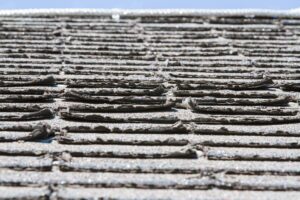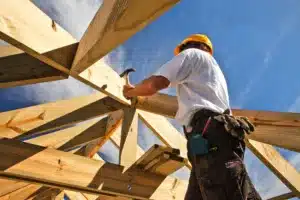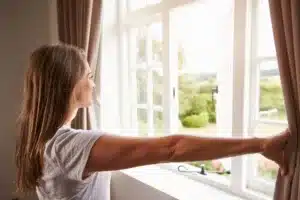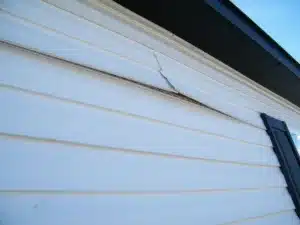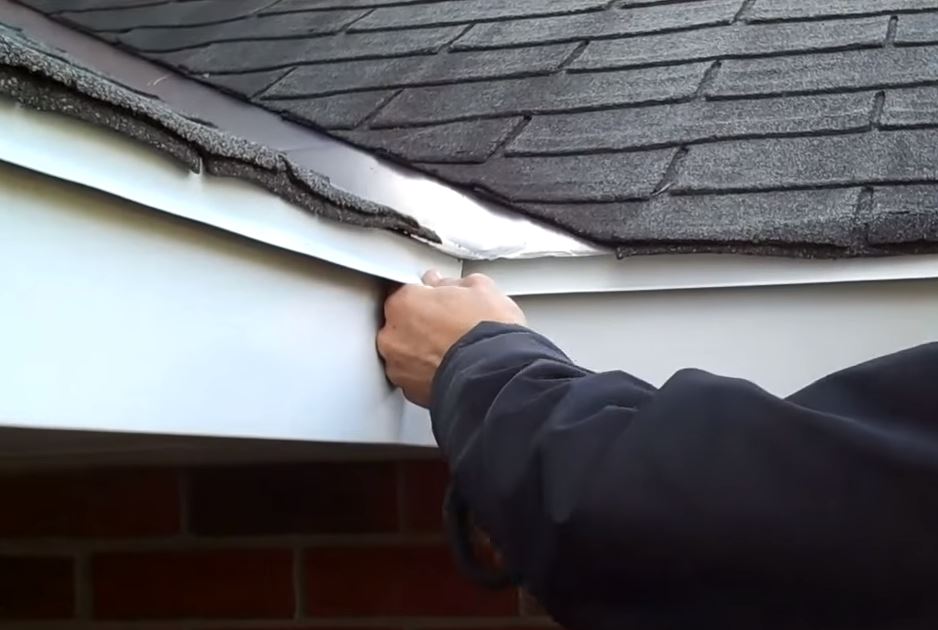
Drip edge is a piece of metal flashing installed to cover the gap between the roof deck and the fascia board (also known as a gutter board). It’s typically installed along the long side of the roof, but can also be placed on the gable ends to protect from sideways rain and snow. Although drip edge is not always required by the shingle manufacturer to maintain the warranty, it’s still a good type of flashing to have. Our Maryland roofing contractors install drip edge on all homes we work on, and here is why.
Backing for the Shingles
Drip edge sits right underneath the starter course and the first row of shingles, providing additional support. Without the drip edge, the shingles will slowly curl inwards as they weather and get old. This is bad, because when shingles are curled, they direct water behind the gutter and onto the fascia board instead of inside the gutter.
Here is a video showing what happens if shingles become curled:
When you have water freely dripping behind the gutter, you get soil erosion in the ground around your home’s foundation. If you are using this space to grow flowers, you may notice that your flower beds develop depressions from all the drips. Constant moisture on the fascia board may also speed up the rotting and permanently damage the wood.
Protection From Rain and Ice
Because shingles at the edge of the roof are supposed to sit straight and not curl, this leaves a vulnerable spot behind the gutter. Some rain may get into this gap, but the bigger risk is probably ice dams. Imagine if in winter snow and ice piles up in your gutters and starts pushing its way underneath the roof. With no drip edge to stop it, ice and water can get inside your attic, damage the wood and even lead to leaks.
Protection From Wildlife
In addition to all other benefits, drip edge is also great for protecting your attic from wildlife invaders. Small animals like squirrels and bats can use the gap between the roof deck and the fascia board to enter your attic. If the gap is not wide enough, squirrels use their teeth to chew an adequate opening. If your fascia board already has water damage, this is a very easy task for a squirrel. A metal strip, on the other hand, can be very difficult to damage, let alone chew through. But it has to be installed correctly and attached securely in order for it to work as intended.
Installing a Drip Edge
If you have discovered that your roof has no drip edge, don’t panic. Adding a drip edge is a fairly simple process on most roofs. However, if your roof is in poor condition and the shingles are approaching the end of their lifespan, it may make more sense to replace the entire roof. This way the drip edge can be installed before the shingles are laid to ensure the best possible protection.
Give us a call or contact us online with any questions about the drip edge or to get a roof inspection to check whether you have it.

